This post was last updated on December 20th, 2023
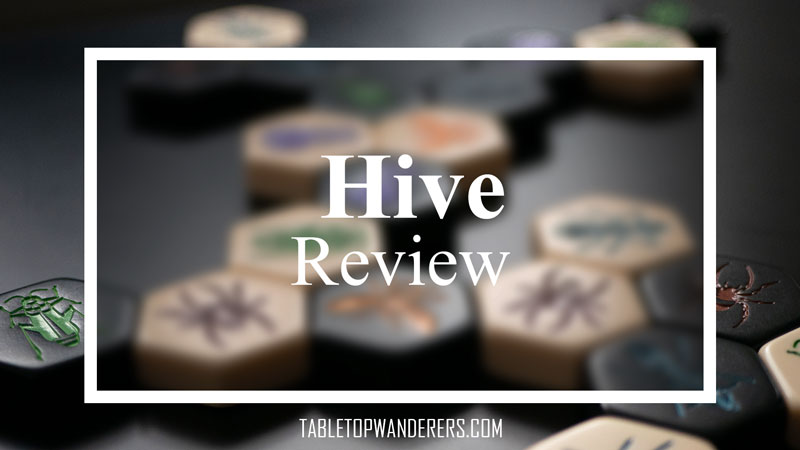
Hive is a bug-themed tile placement board game, where the winning condition is to surround the opponent’s Queen Bee and at the same time try to stop the opponent from doing the same to you.
The tiles surrounding the Queen Bee can be a mix of yours and the opponent’s.
I first tried this game back in 2017.
Me and two friends of mine were waiting for other people to join us for that week’s gaming night and while waiting, one of my friends introduced me to Hive.
I wasn’t impressed at all at first glance.
I personally prefer mid to big games, with a lot of miniatures and components to place on the board, and this little gem was quite the opposite.
No board. No miniatures. Bugs everywhere. I hate bugs!
In my mind that gaming night was about to start in a completely wrong way… until I touched those hexagonal pieces.
They are incredibly smooth while also being bulky, perfect for any kind of surface.
Hive quickly became one of my favourite games, and I included it in my personal best two-player board games list!
So, without wasting any more time, let’s dive into the game!
This post may contain affiliate links. If you click through and make a purchase, I will get a commission at no extra cost to you. See our Affiliate Disclosure.
How to play Hive
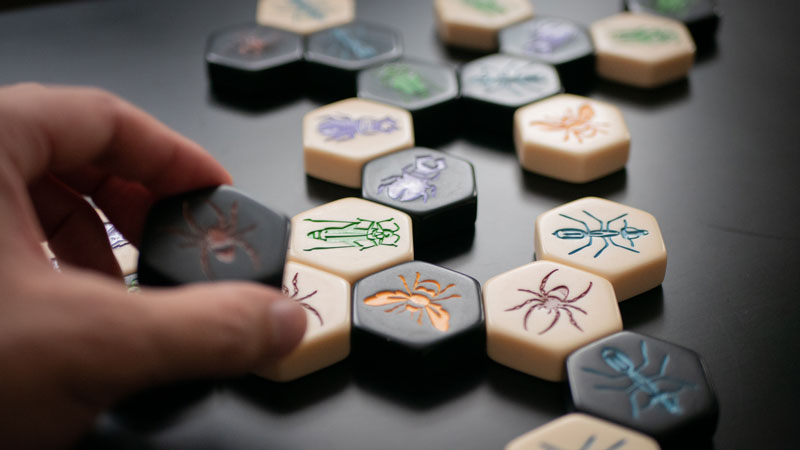
Each player chooses a colour and takes the respective 11 pieces and places them face up in front of them.
To begin the game, the first player plays one piece on the table and the second player does the same and puts a piece adjacent to the other one.
Two things I must say here:
There isn’t an official rule stating which player moves first; it can be either “white always” like chess, or the youngest, or whoever has been bitten by an insect recently. Your call!
This is the ONLY TIME where 2 different coloured tiles are placed next to each other; after the first turn in fact, you have to place your pieces touching the tiles of your colour.
Players carry on placing their bugs on the table until they eventually place the Queen Bee.
The Queen Bee piece MUST BE placed in the first 4 turns of each player.
After playing their Queen Bee, players can do two things:
- Place a new tile, following the rule of playing them next to the ones of the same colour.
- Move any of their tiles that are already played on the table, which can now be moved adjacent to the opponent’s colour.
Each bug moves differently, and you can read this under the “Game Components” section where you can find a detailed explanation and a few tips.
Remember that you can move any piece as long as it remains connected to the rest of the hive. One of the most important rules of the game is that the Hive can never be broken.
By moving your pieces and playing new bugs, your goal is to surround the opponent’s Queen Bee tile to win the game.
You don’t have to have all of your tiles on the table to win the game.
Game Components
Queen Bee
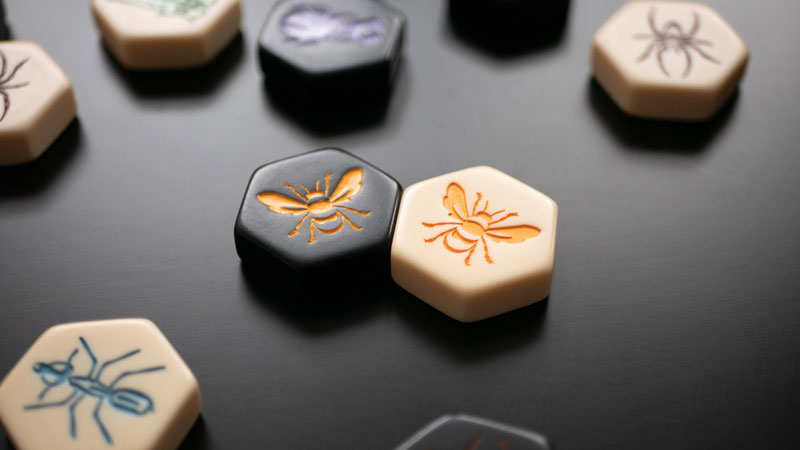
The Queen Bee is your most important piece.
You can play it whenever you want, following your strategy, but it must be placed by your 4th turn.
The Queen Bee can only move one space per turn, but she can screw up your opponent’s strategy if moved at the right time.
Imagine the scenario where she is surrounded by 4 pieces touching each other; she could fly outside the centre putting yourself in a situation of advantage!
I have played Hive many times with many different friends, and the Queen Bee is one of the most unmoved pieces… which isn’t recommendable!
Beetle
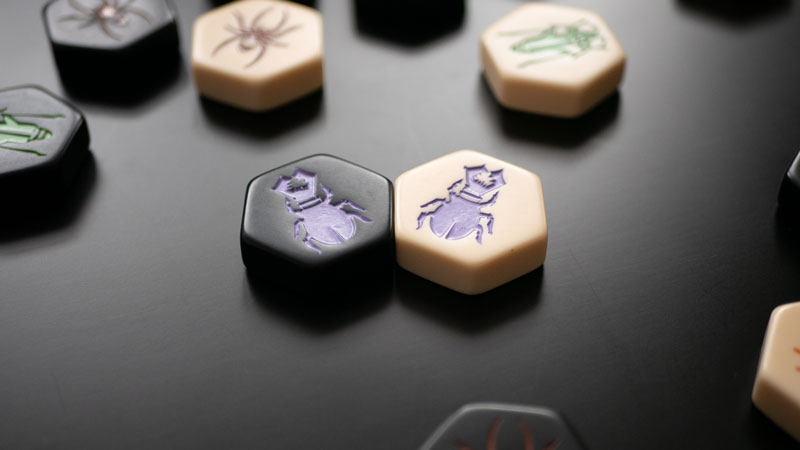
The Beetle, like the Queen Bee, can only move one space per turn, but it has the unique ability to jump on top of the hive.
From that position, it can move across the top of the hive and dropping into free spaces surrounded by tiles, and therefore not accessible to most other creatures.
If an opponent’s tile is covered by one of your beetles, that piece can’t move and for the purpose of the placing rules, that stack colour is considered yours.
Imagine the scenario where your Beetle (white colour) is on top of the opponent’s Queen Bee (black colour).
That 2 pieces stack is considered white, so from now on you’ll be able to directly place your new pieces next to the Queen Bee, and this is a killer move!
The only way to block a Beetle is to move one of yours on top of it.
All four Beetles in the game can be stacked one on top of each other.
Grasshopper
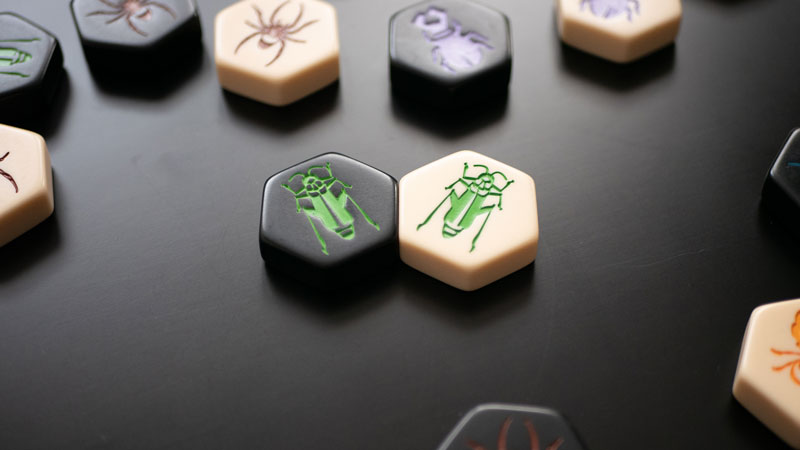
The Grasshopper can’t move alongside the outside edge of the hive, as all the other creatures do.
Instead, it jumps, following a straight line, from its position over any number of pieces to the next unoccupied space.
This particular movement gives it the ability to fill into spaces surrounded by other tiles, and not reachable to most other creatures.
This insect is one of the most underrated pieces in the game, but if it’s played and moved at the right time it can be a game-changer.
Spider
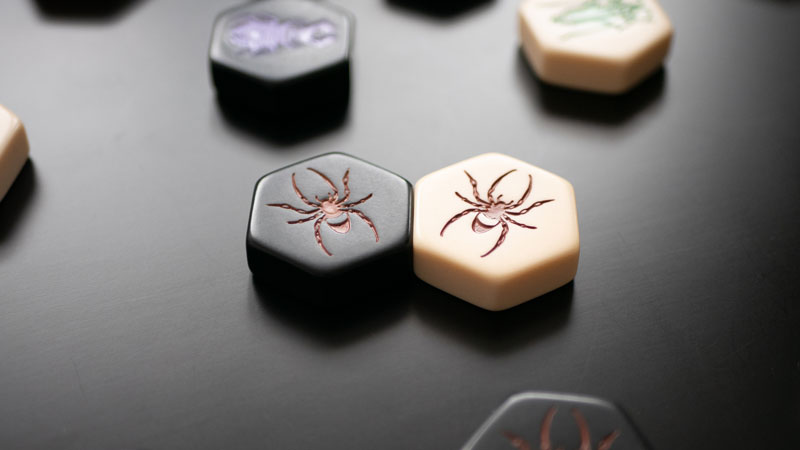
The Spider can only be moved by 3 spaces per turn (no more, no less) following a direct path and can’t backtrack on itself.
It can only move around the pieces that are in direct contact with each step of its move.
Soldier Ant
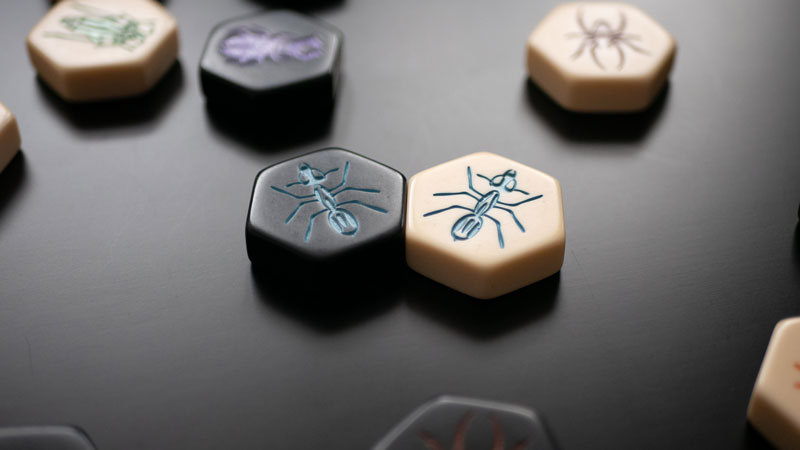
The Soldier Ant is by far the strongest piece of them all.
It can move from its position to any other position around the Hive.
This freedom of movement makes the Ant the perfect piece to control the board and at the same time keep your strategy flowing.
No products found.
Expansions
There are currently three expansions of this game, that add 1 insect each. These are:
Pillbug
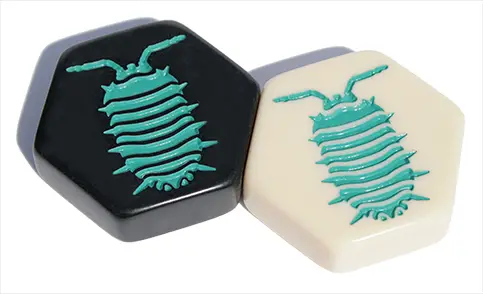
The Pillbug moves one space at a time and it has a special ability that it may use instead of moving.
This ability allows it to move an adjacent piece (friendly or enemy) to another empty space adjacent to itself.
This special ability makes the Pillbug a formidable defensive and offensive bug.
I personally use it in a more defensive role, placing him nearby the Queen Bee.
It helped me to get out of tricky situations quite a few times!
Ladybug
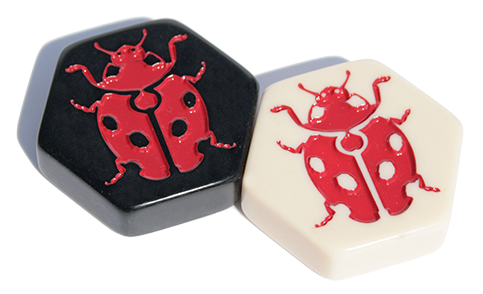
The Ladybug is a versatile bug.
It moves three spaces each turn, two on top of the hive and one down into unoccupied spaces.
It can change direction when moving, so it can get to positions that other pieces cannot quickly reach.
Even though it can’t block opponent pieces by landing on top of the hive like the Beetle, it can move into or out of surrounded spaces making it a very versatile bug.
Mosquito
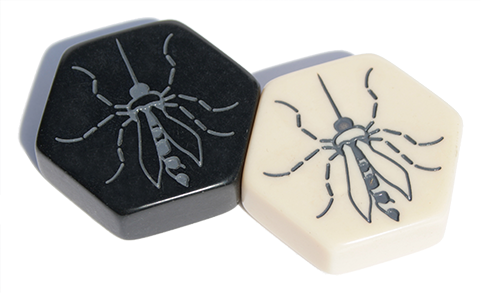
The Mosquito is a very tricky Hive insect.
It has no movement ability of its own, but takes its movement ability from any other bug, of either colour, that it is touching at the start of its move.
This means that it is constantly changing its movement and can quite easily catch your opponent unawares.
Among all expansions, the Mosquito is the most fun to use!
Conclusion
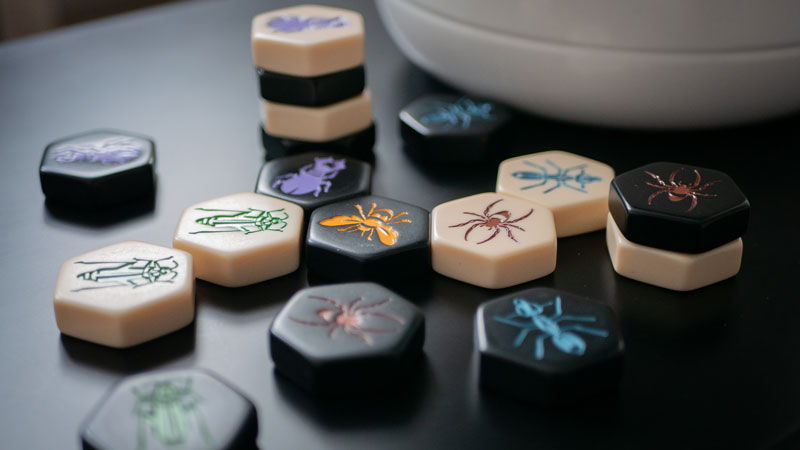
Hive is a deep board game, despite the look.
It is very easy to explain, it literally takes up to 5 minutes, but it needs a lot of games to be good at it. Like Chess.
It has amazing replayability thanks to its abstract nature, so you can play as many games as you want without feeling bored, even without any of the expansions!
Speaking about them, they all add a bit of longevity but I’d say they aren’t essential to enjoy the game.
It is the perfect travel game for many reasons; there’s no board, in fact, you can play it on every flat surface nearby you and the game is so compact that you can throw it in every bag without worrying about any damages.
If I want to point out a flaw, I’d say the Soldier Ants seem a bit overpowered compared to the other insects. Most of the time the game revolves around the ability of a player to use them.
On that matter, if you want to know more ways to win the game, I’ve recently covered the topic in my Hive Strategy article, I’m sure you will find something useful there.
In conclusion, Hive is a quick and fun game, and for all the reasons written above I 100% recommend this game to everyone!
Even if you hate bugs! 🐝
Hive Pocket
Currently, The Ladybug and The Mosquito expansions have been included in the Hive pocket version of the game.
This version differs from the original game just for the size of the tiles, which are smaller.
When you think it couldn’t get any tinier!
No products found.